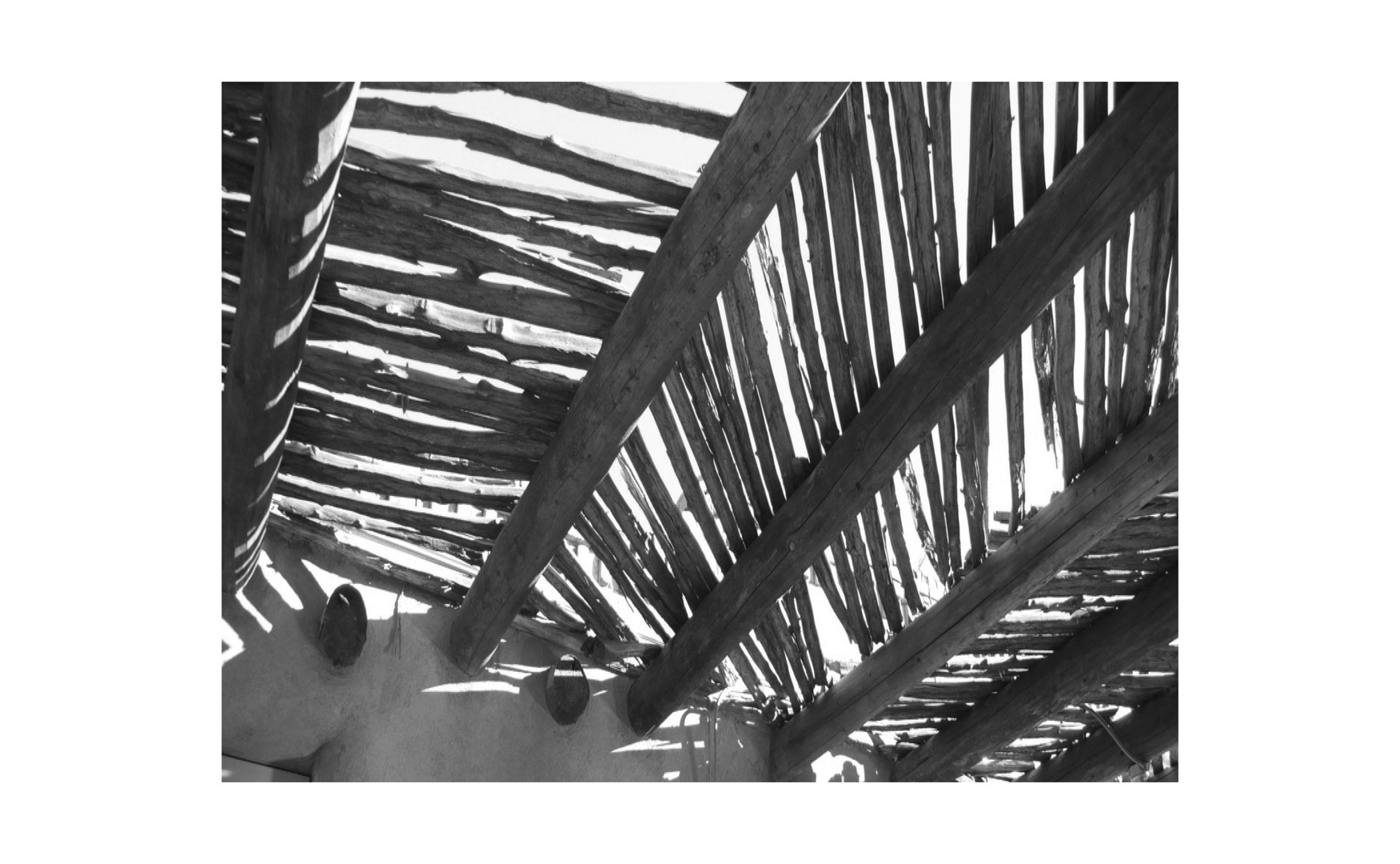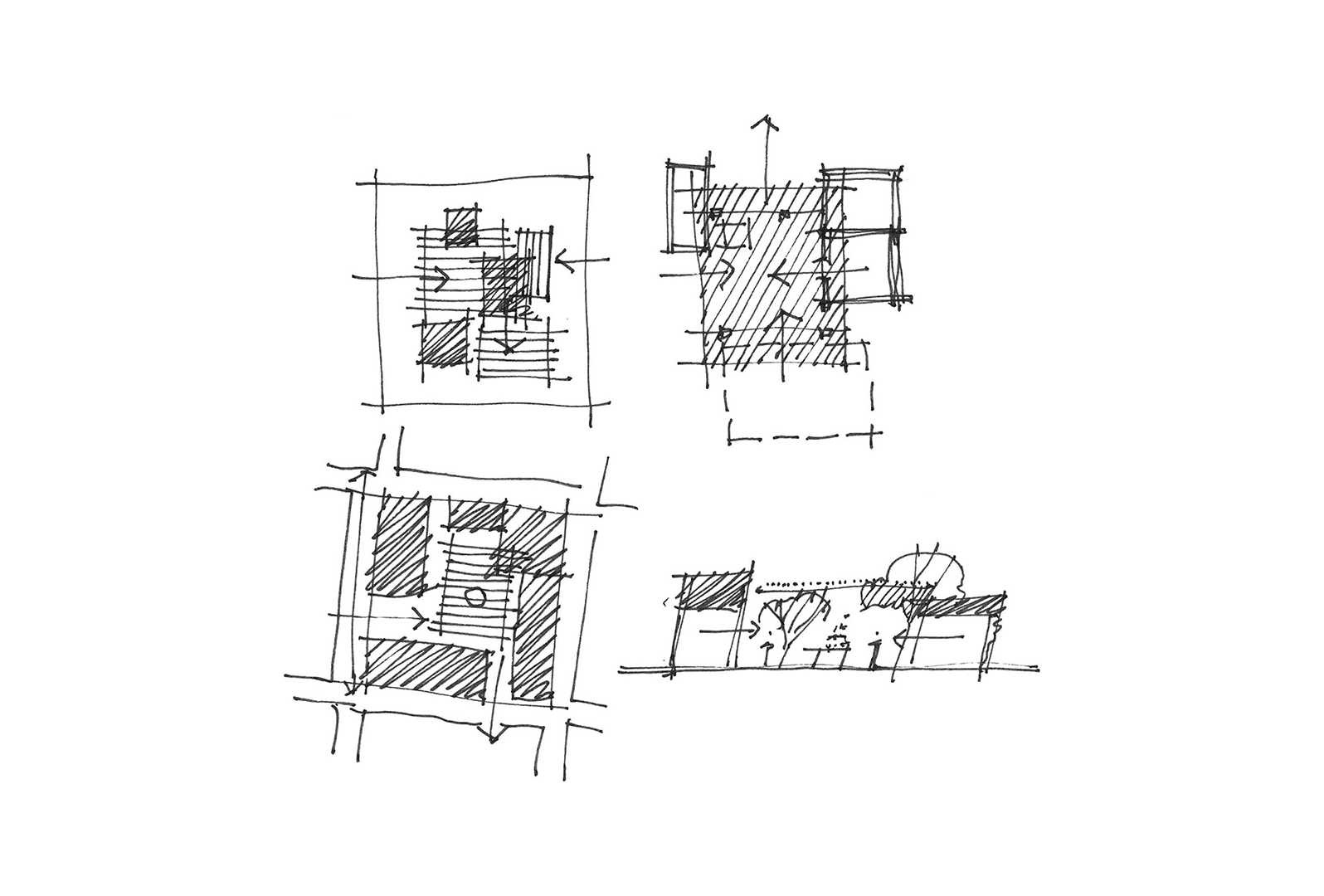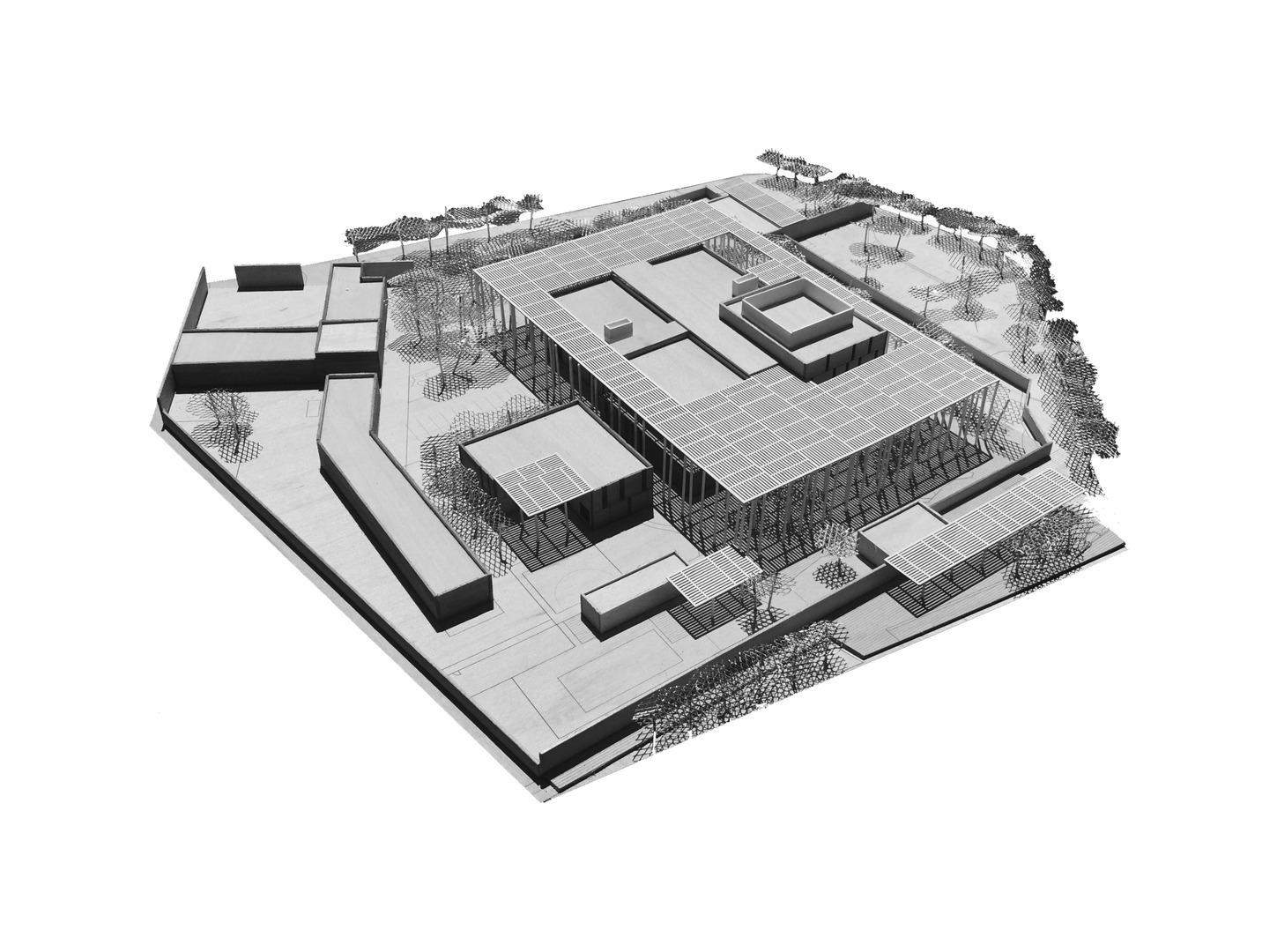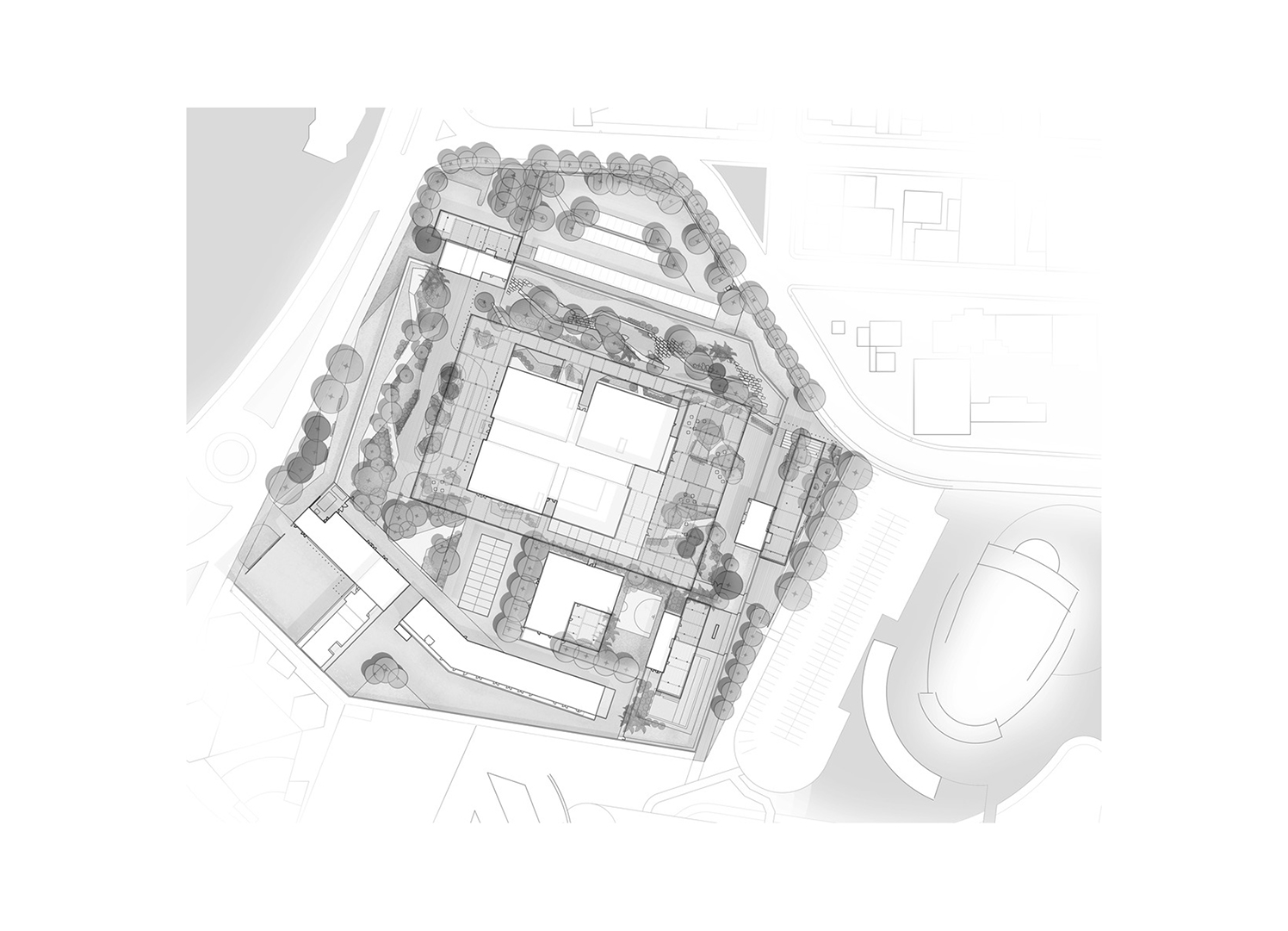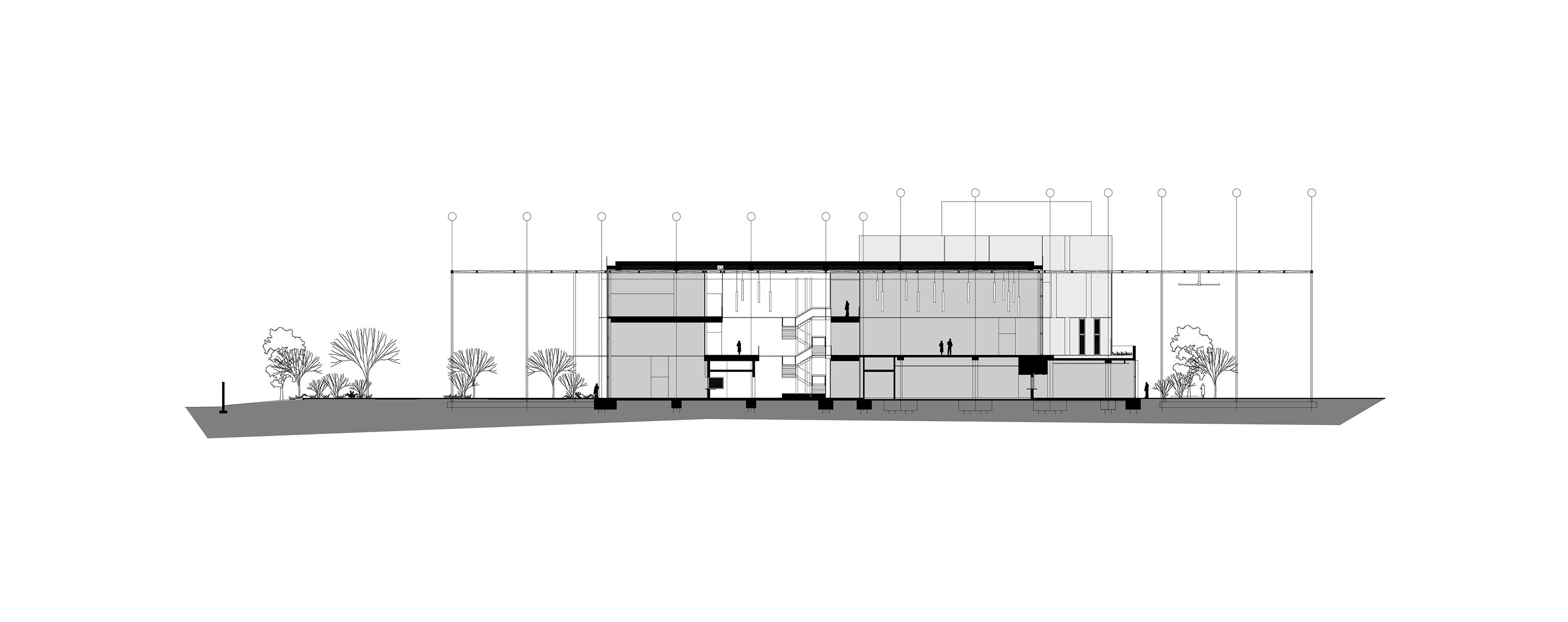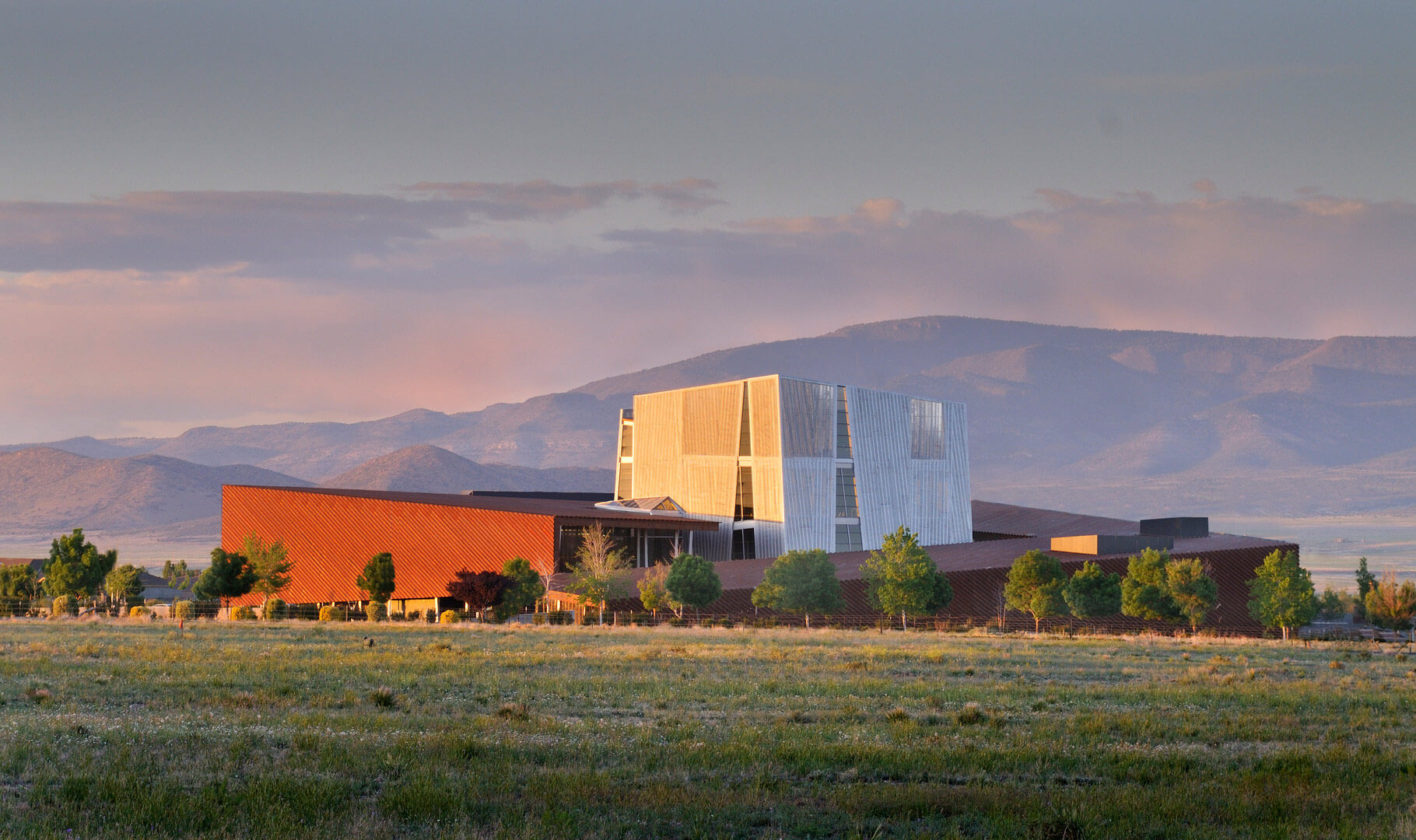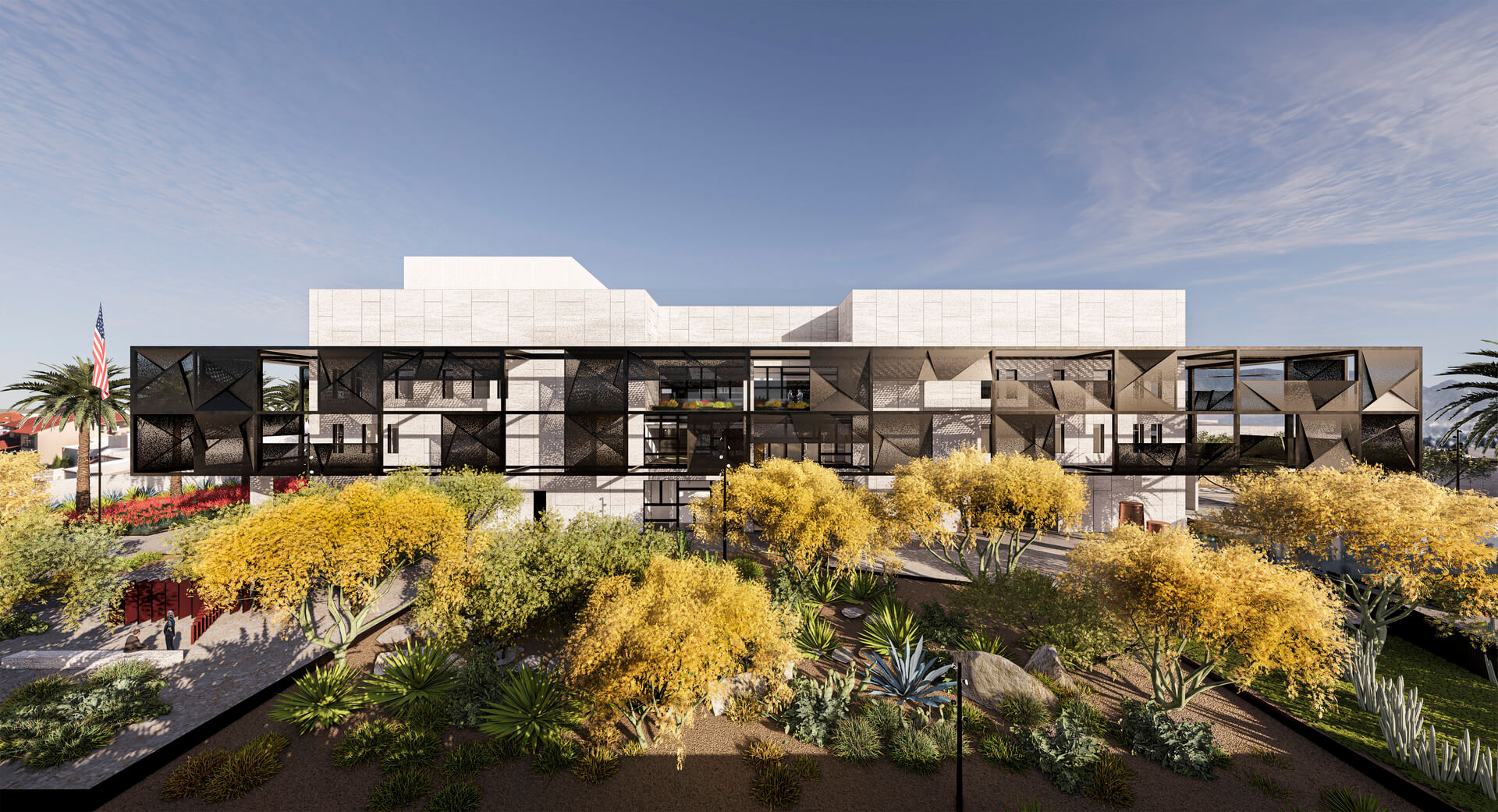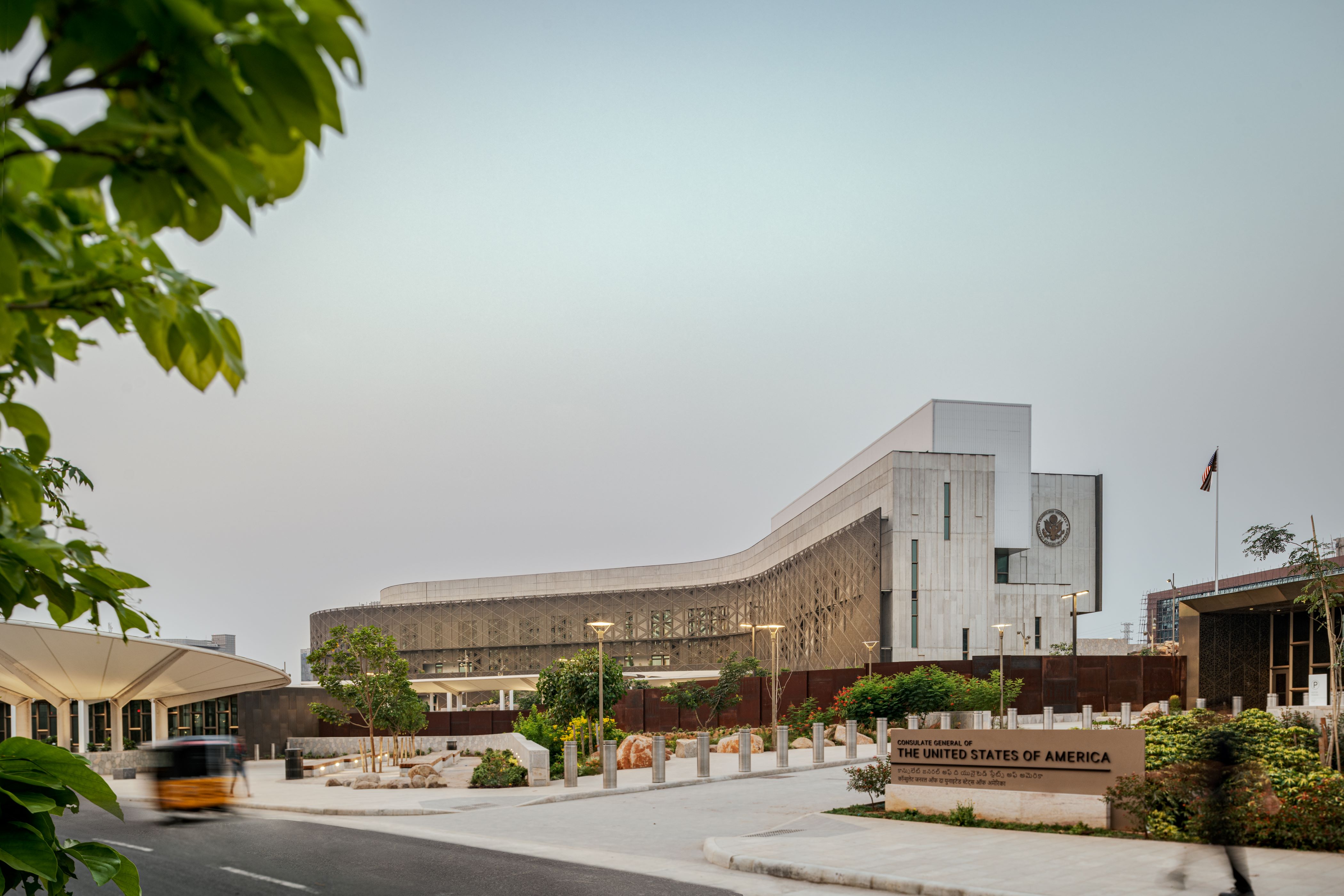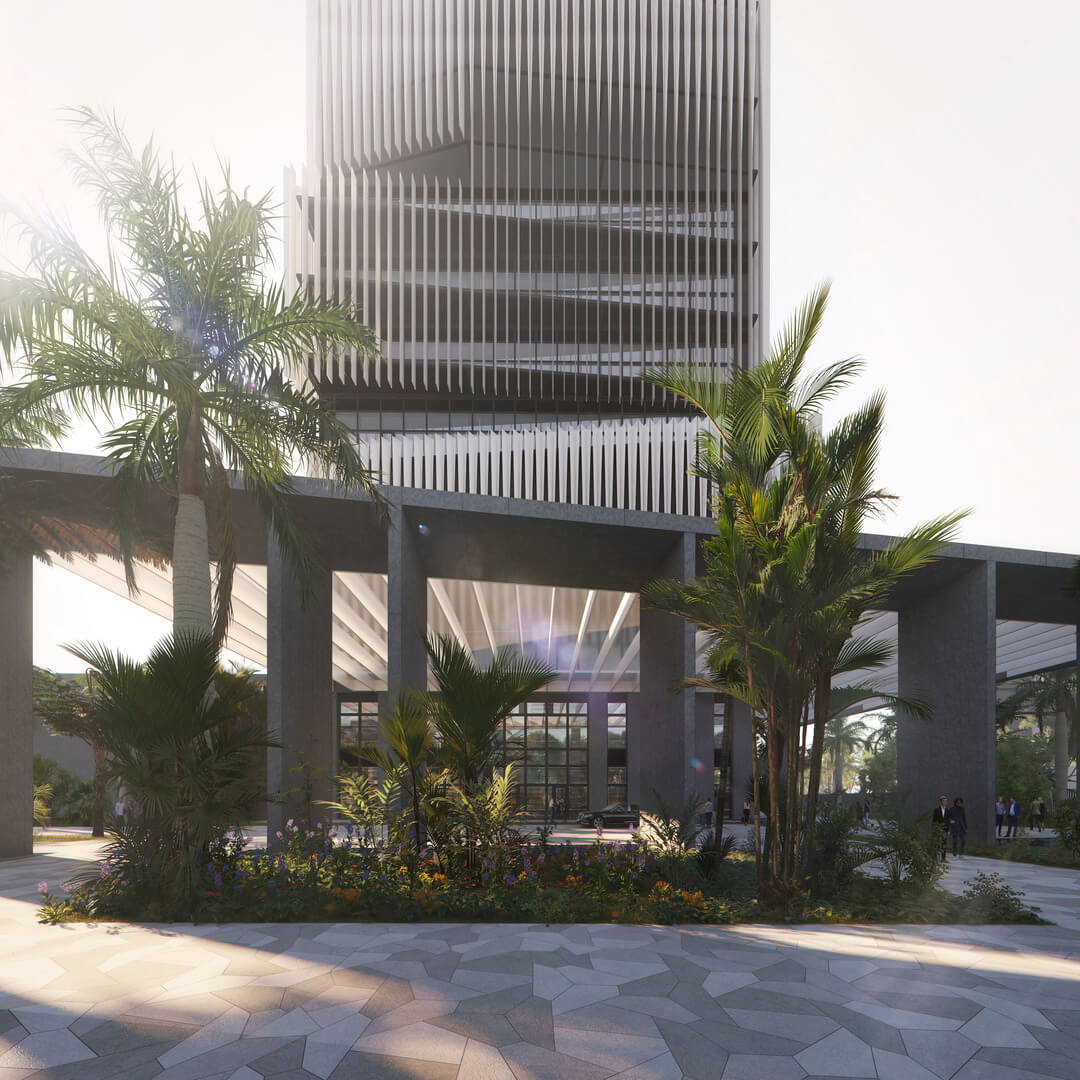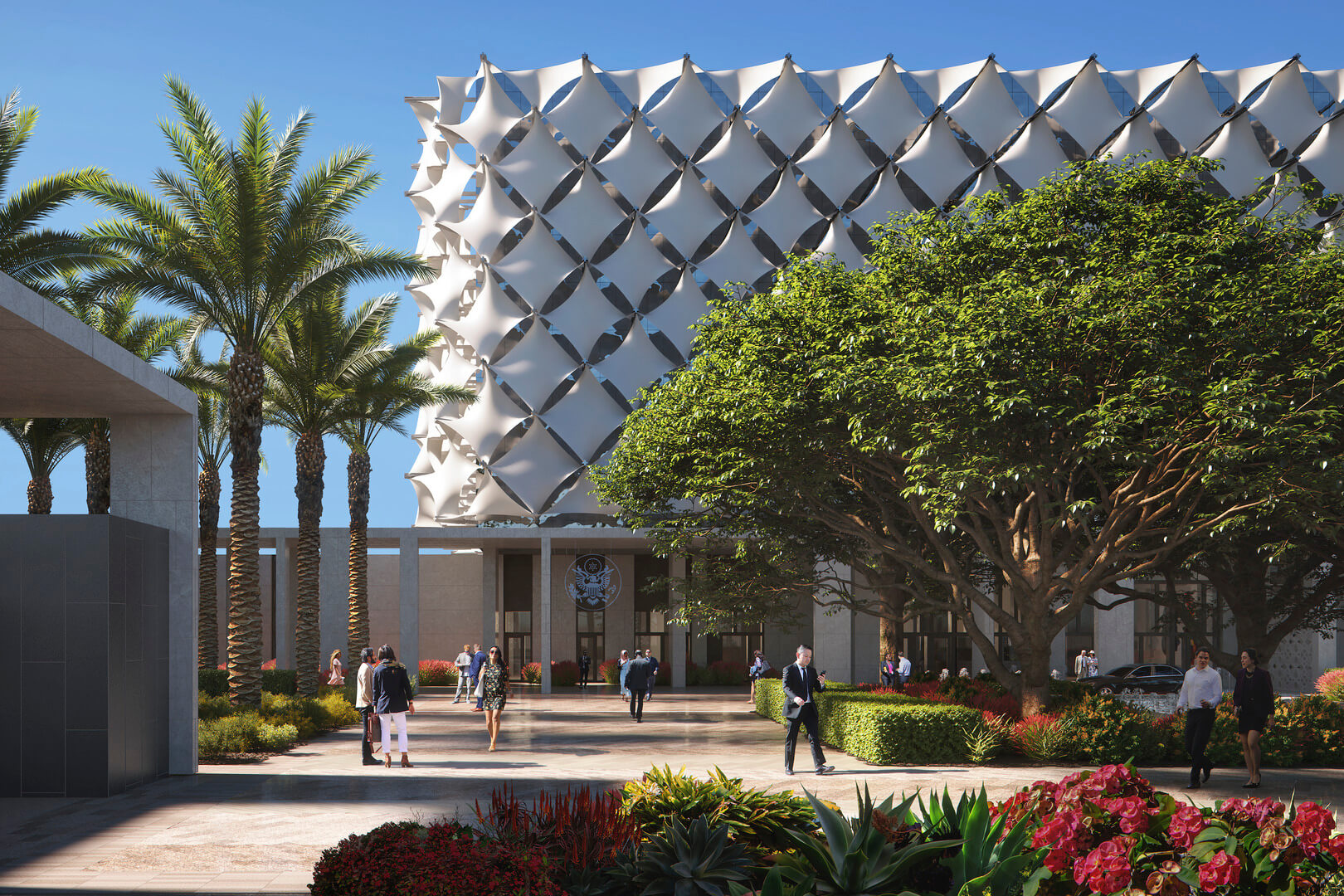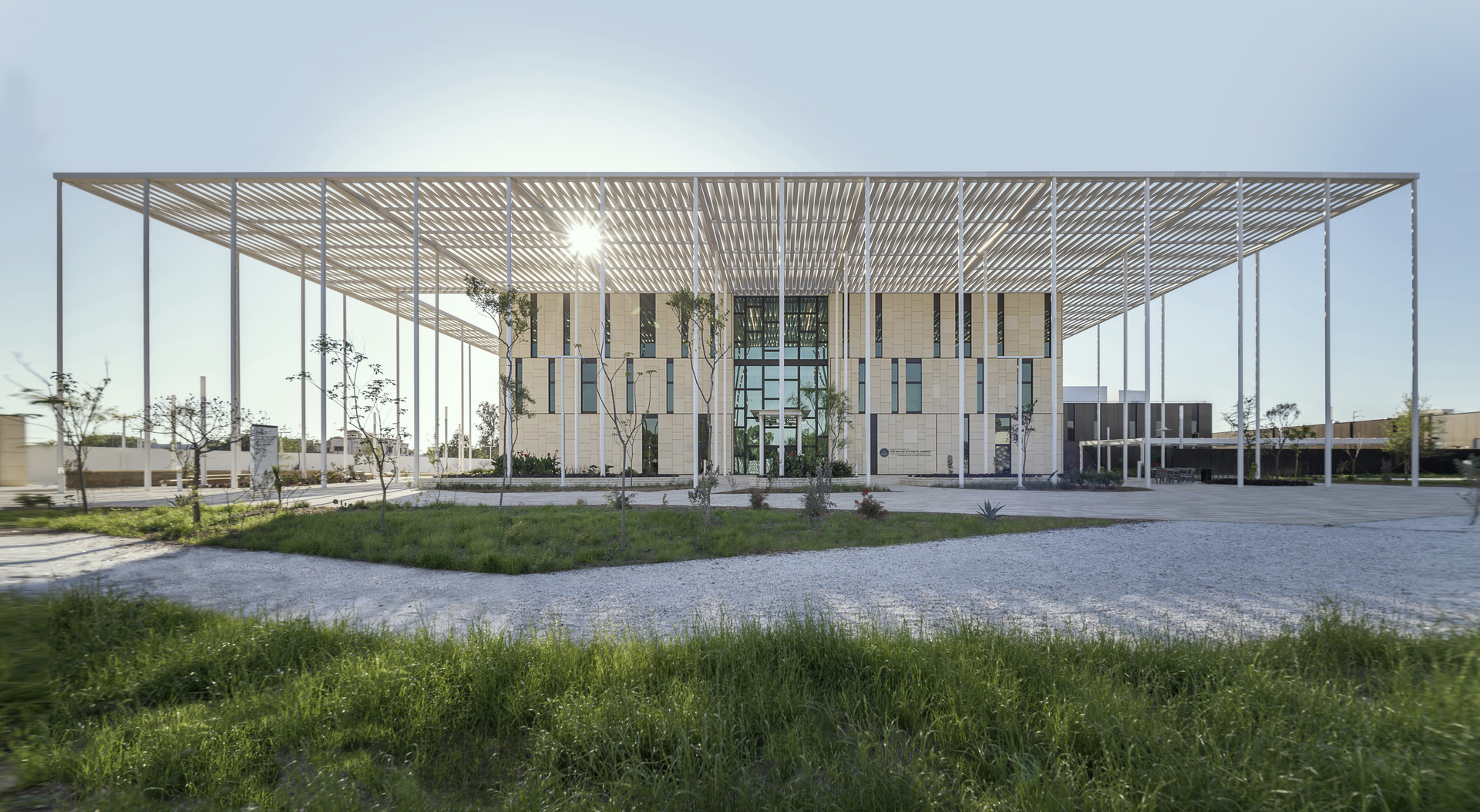
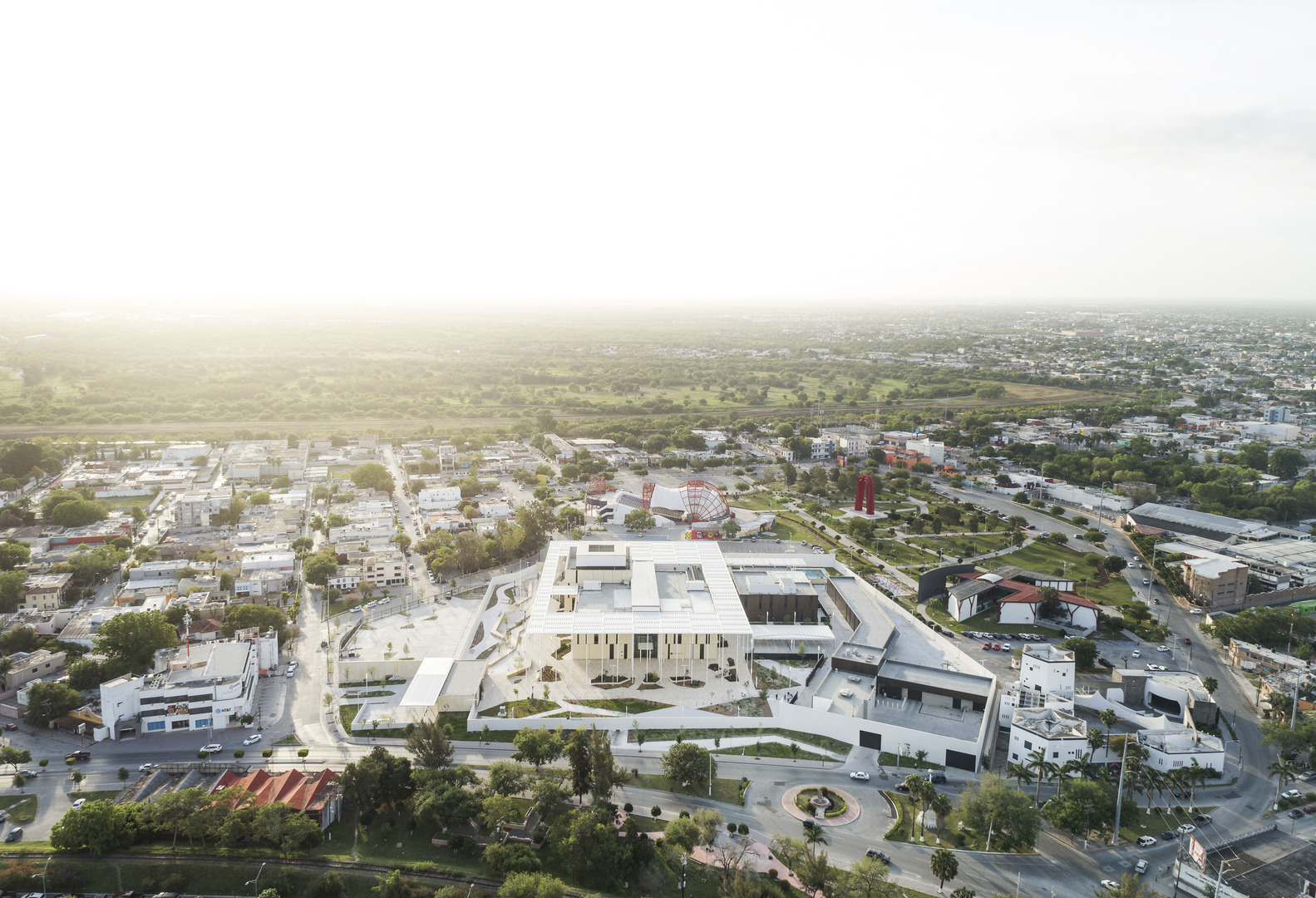
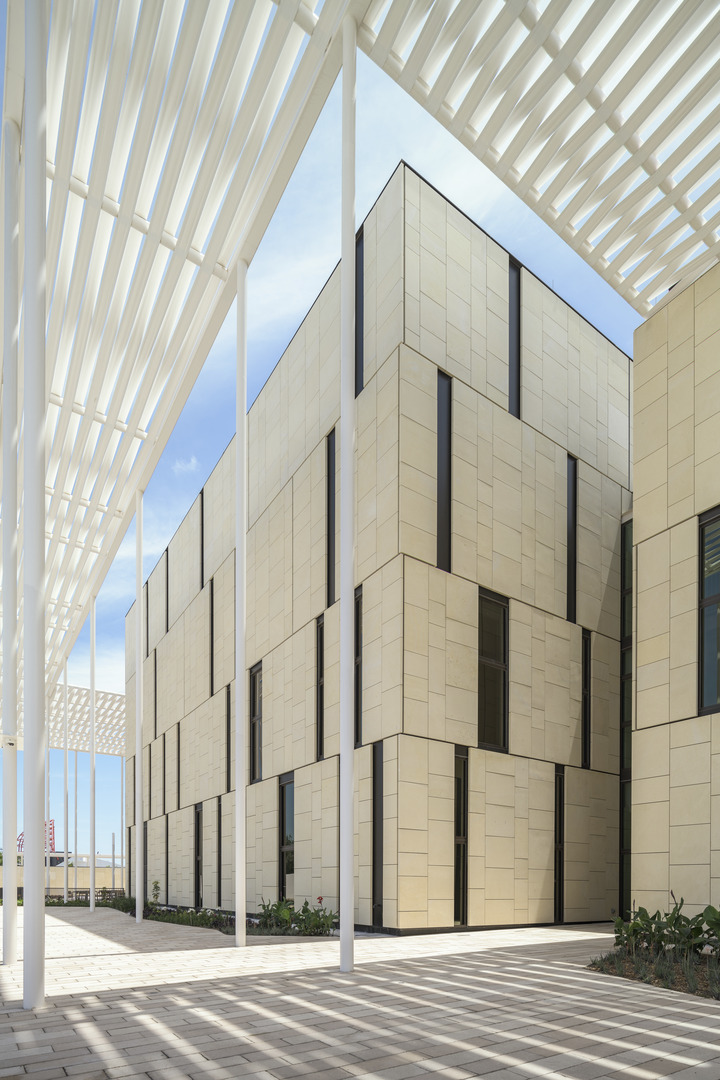
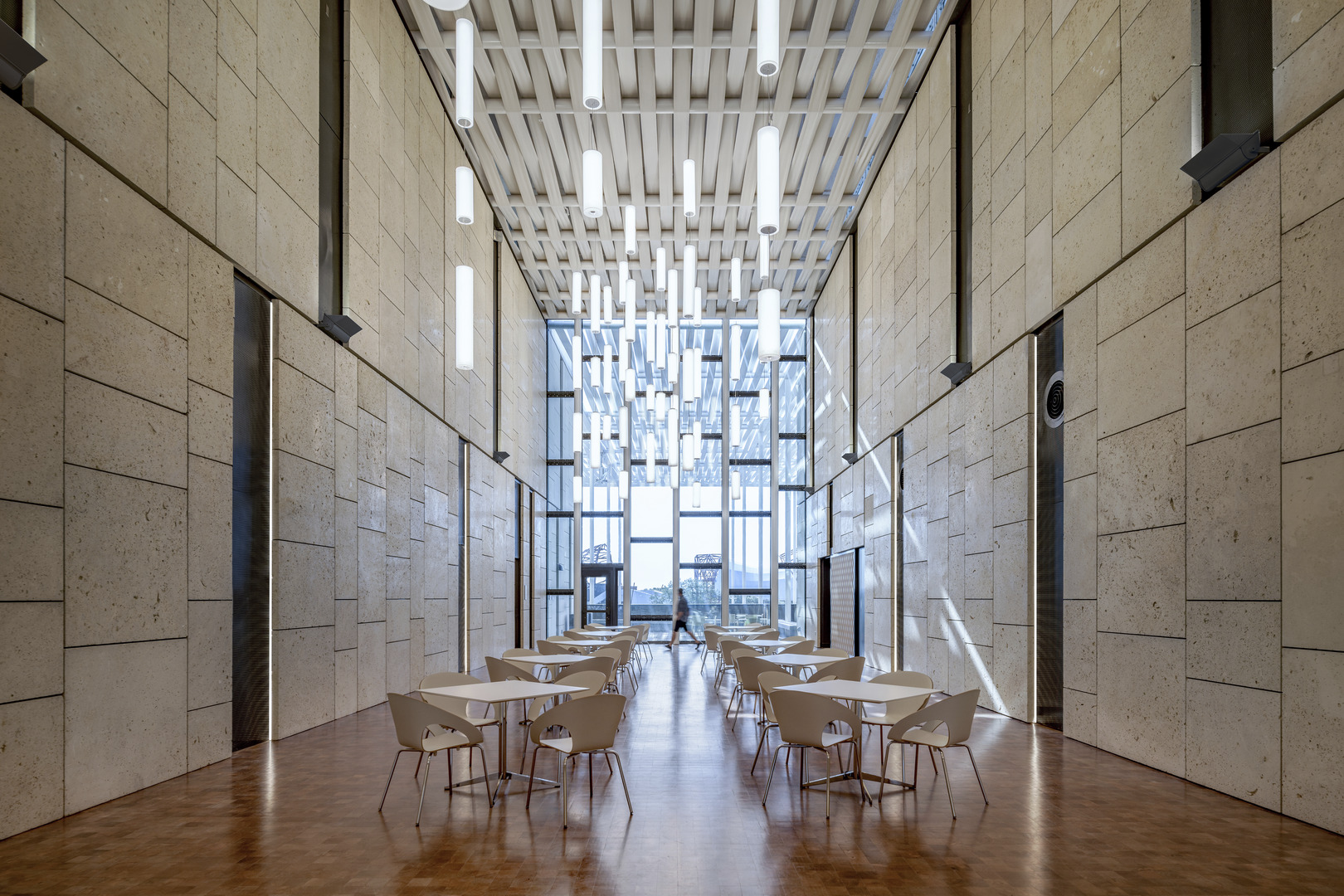
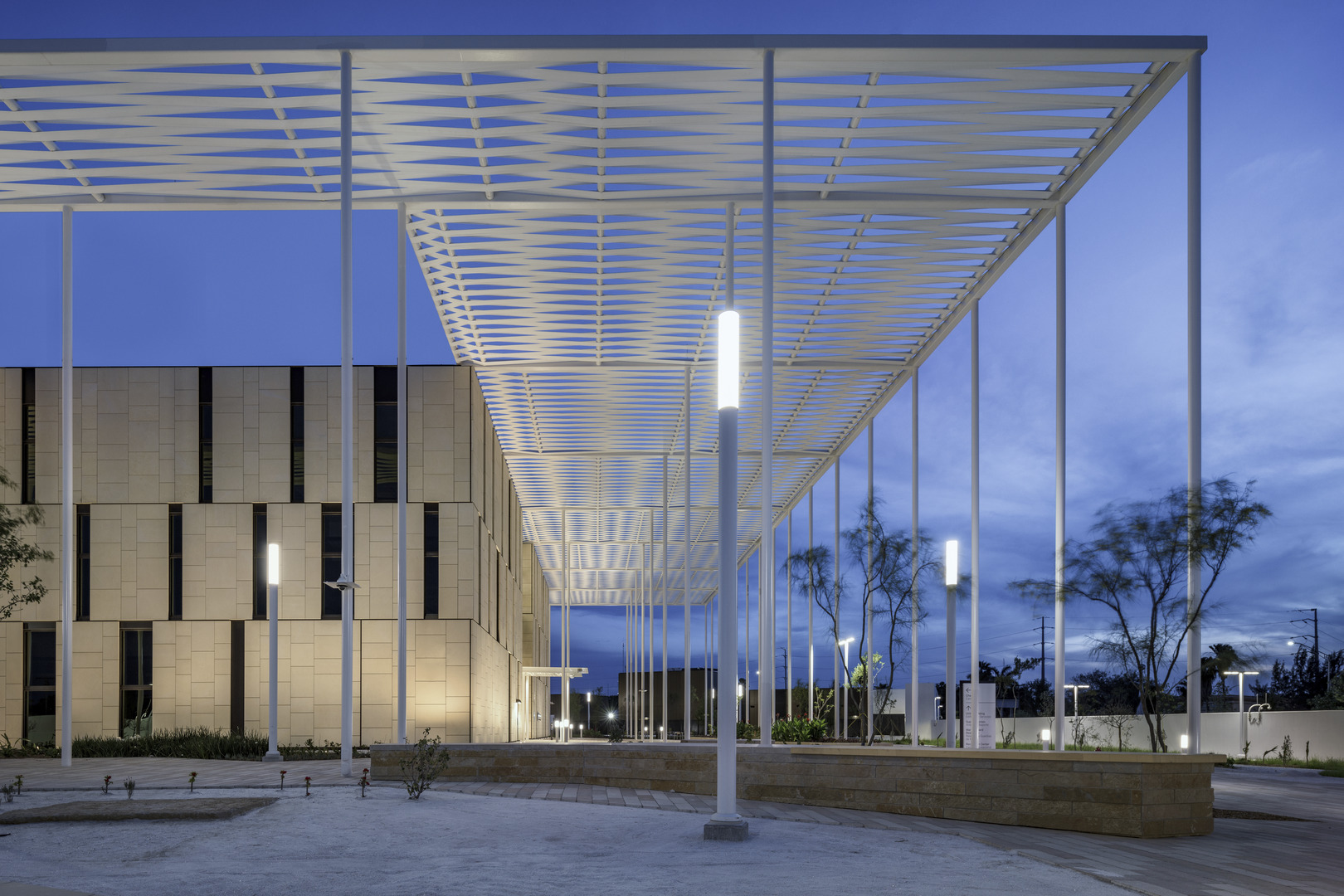
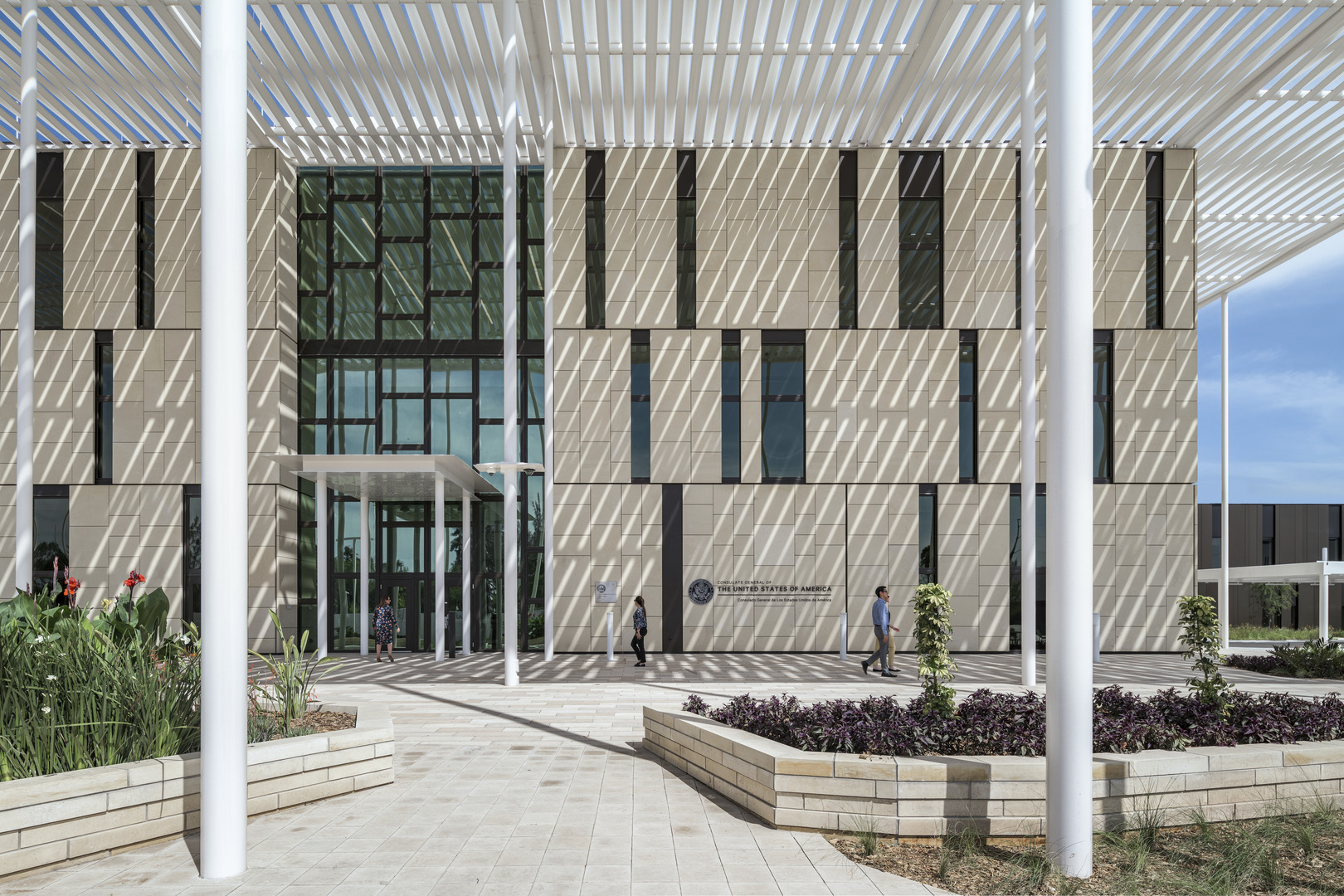
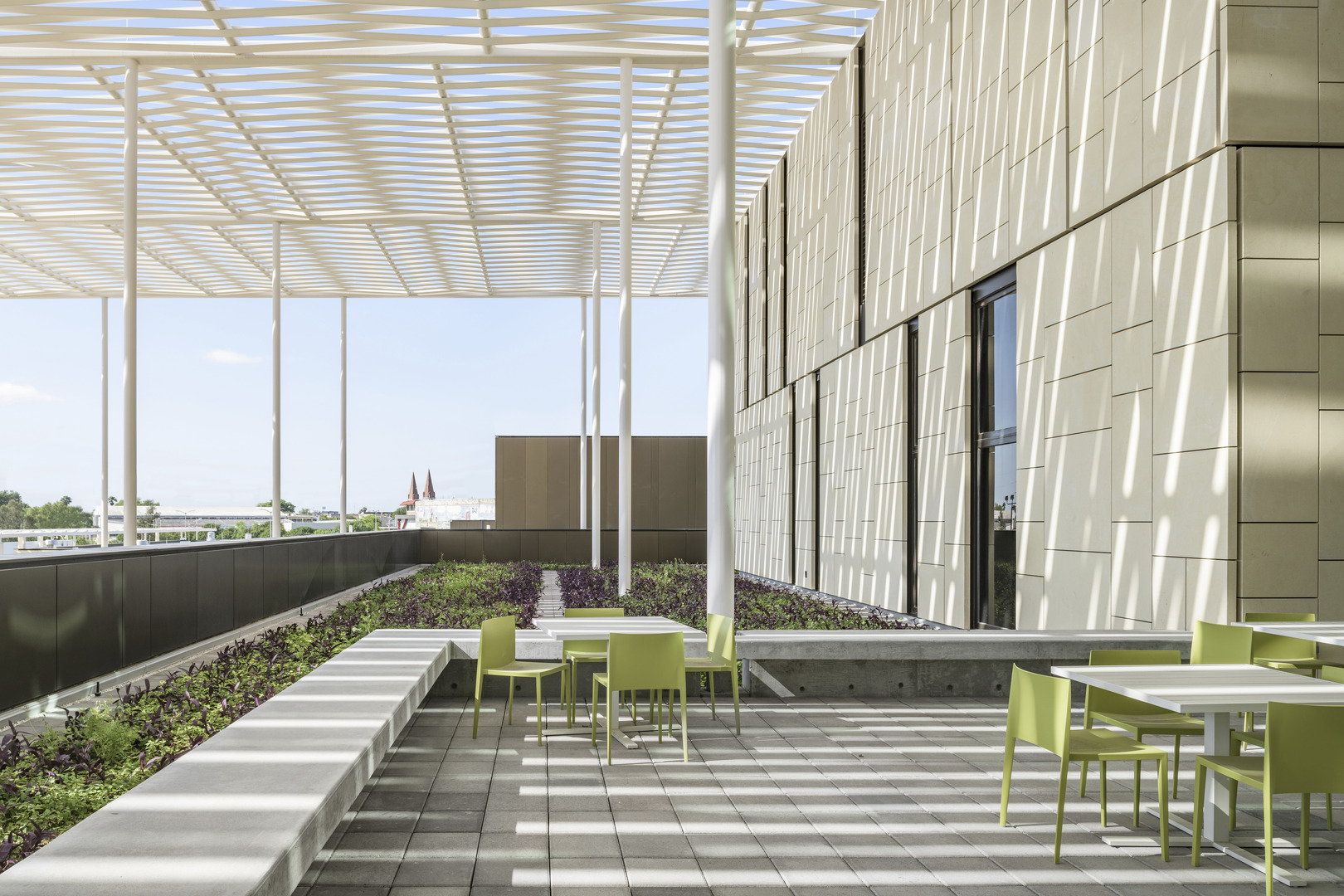
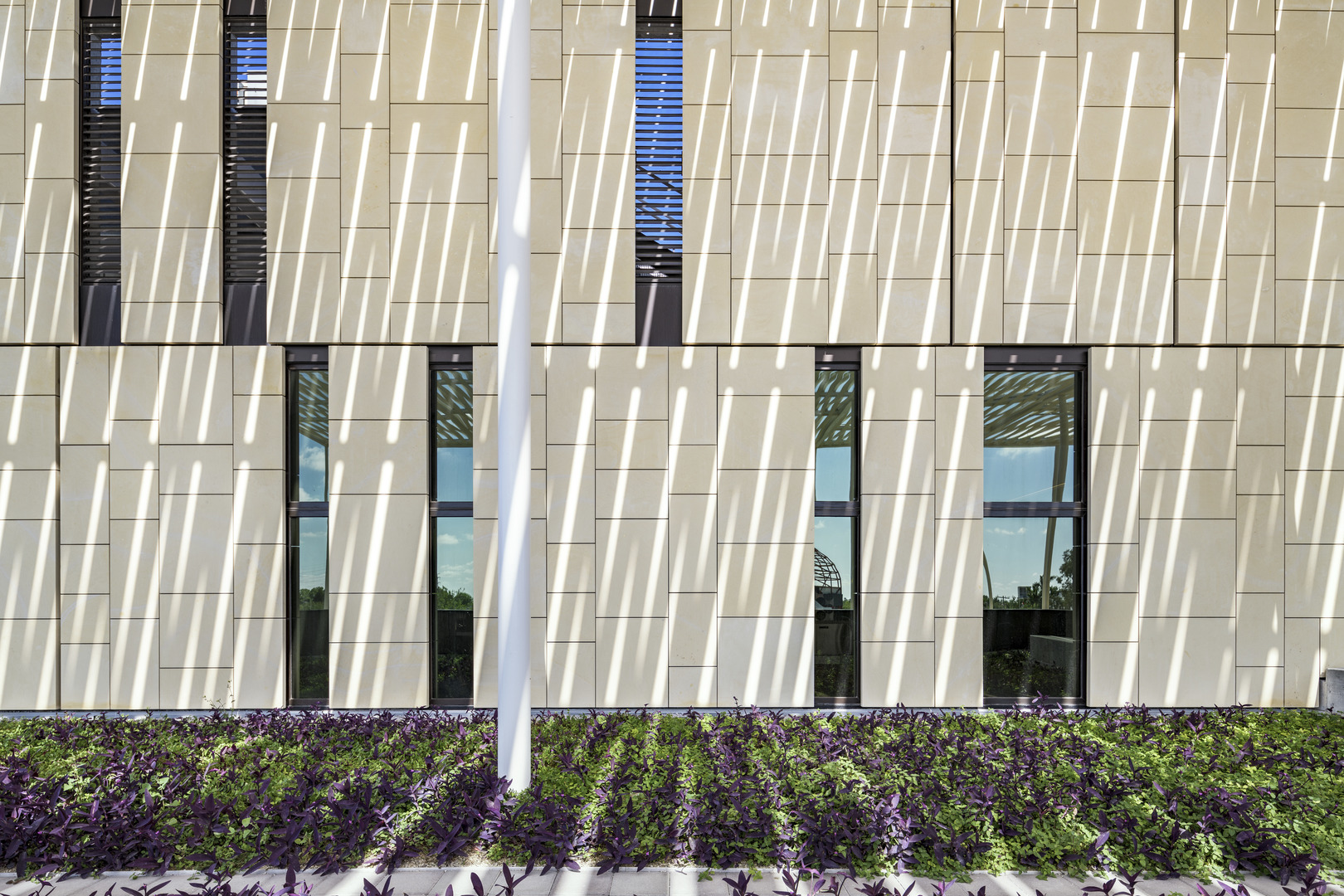
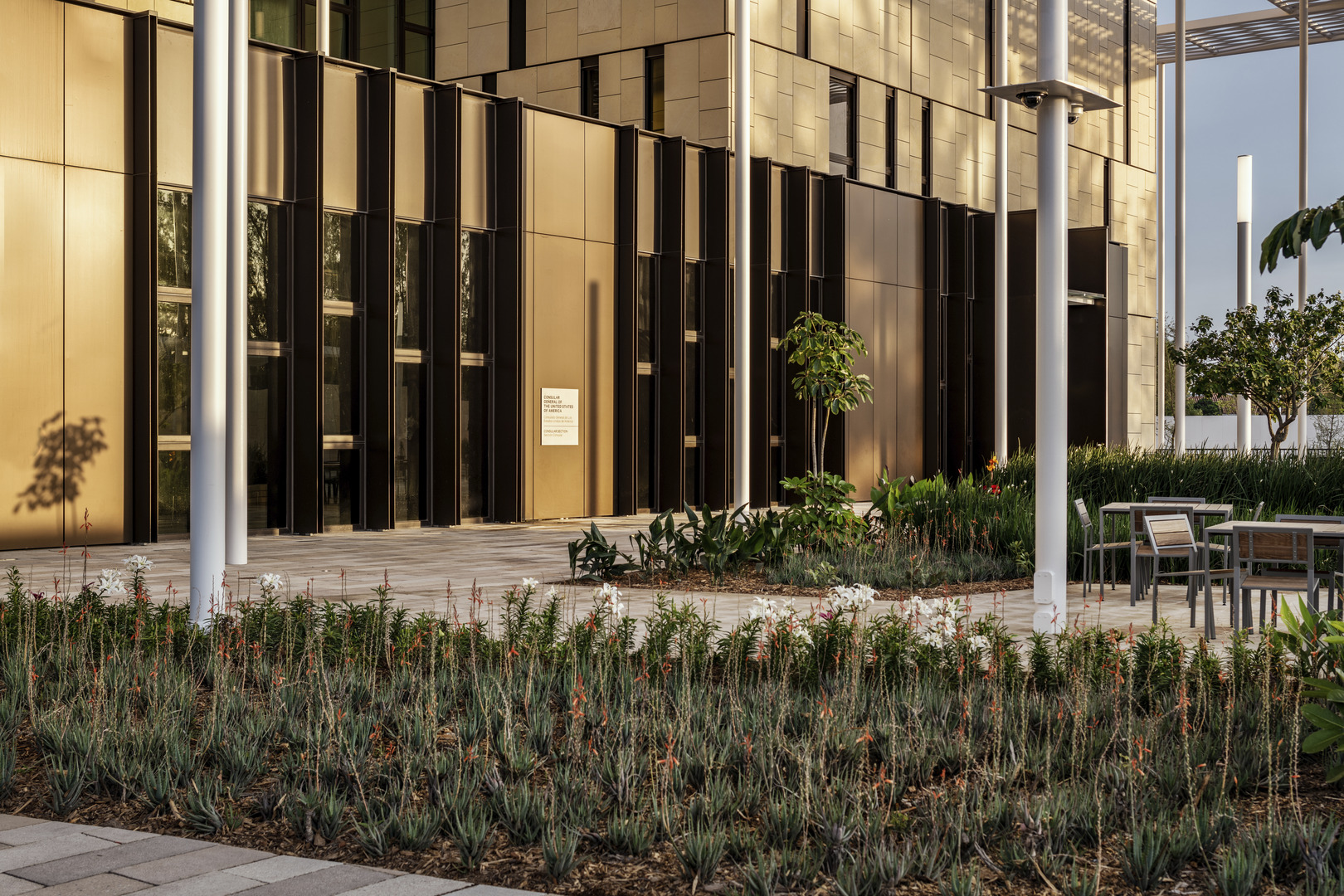
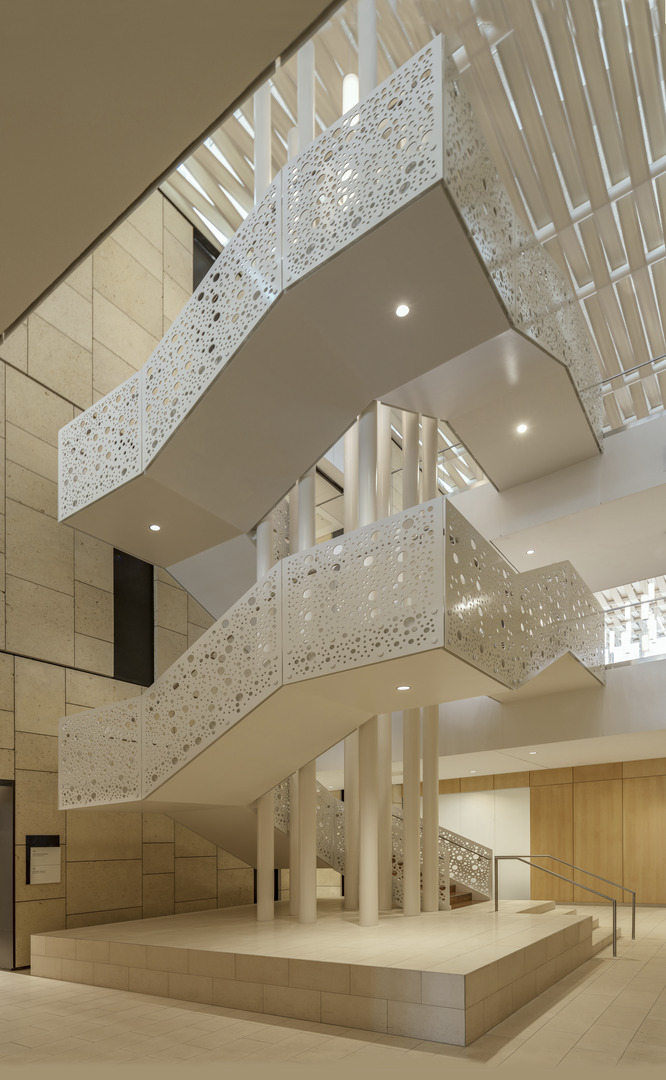
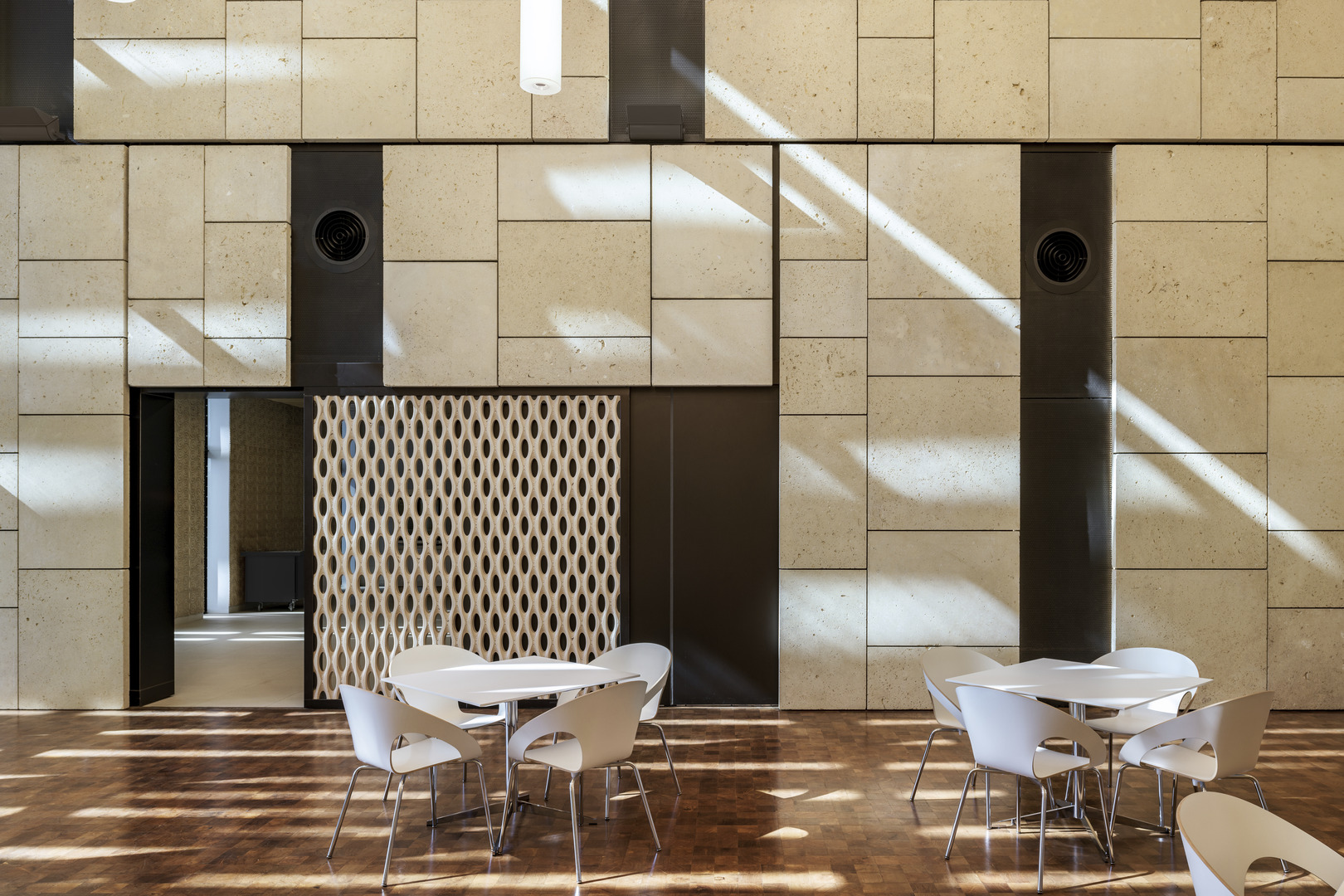
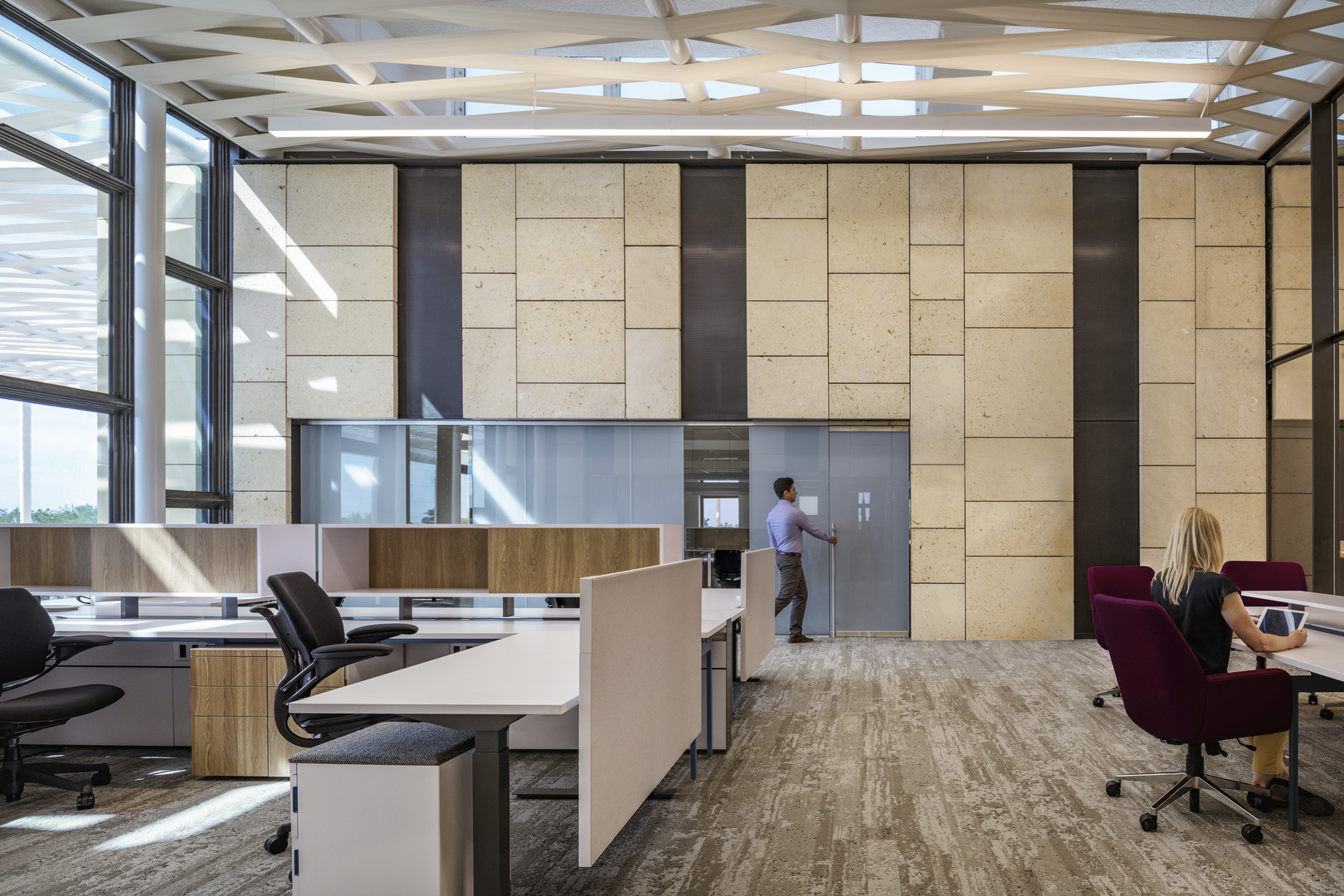
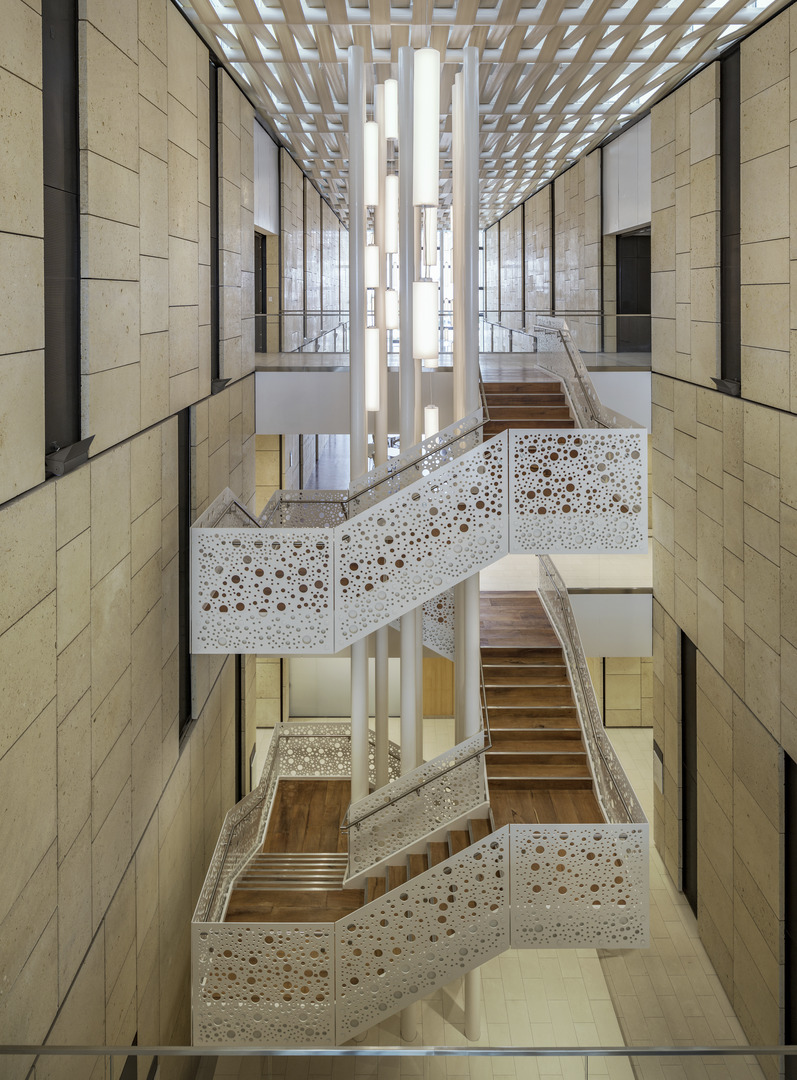
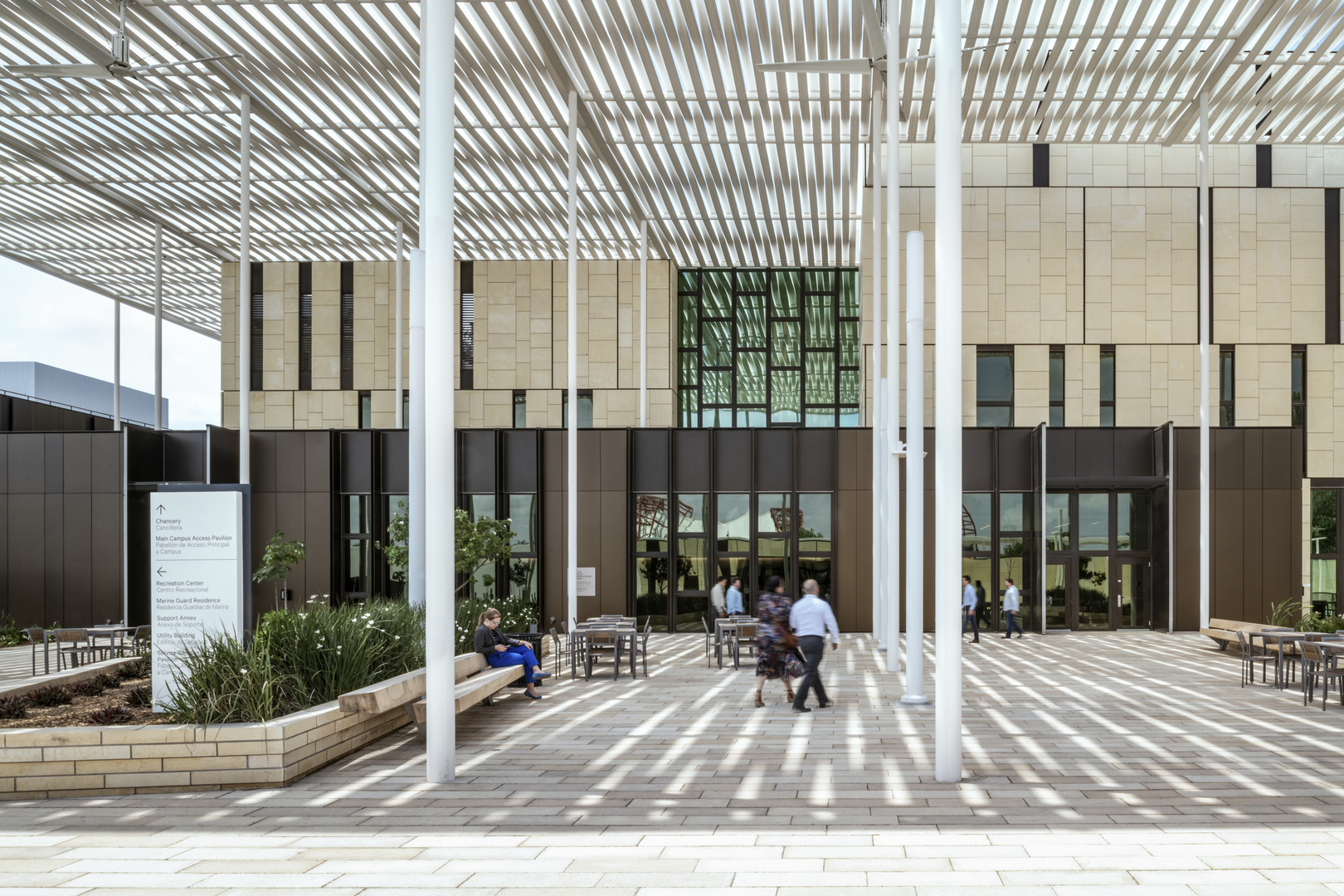
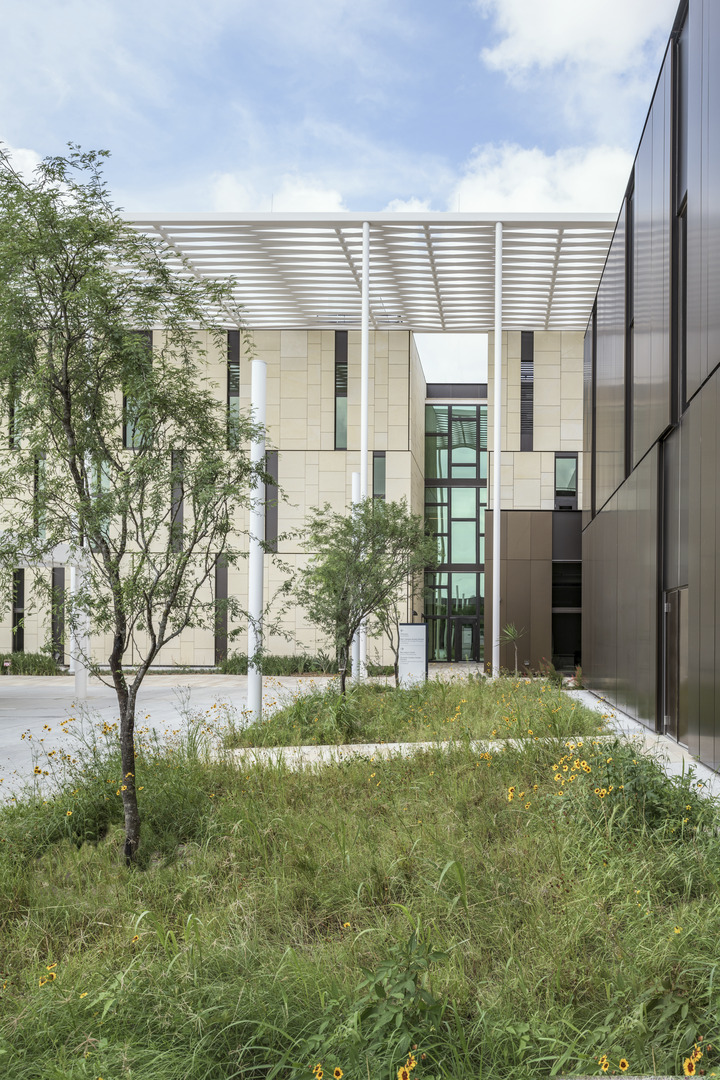
The Embassy Effect Embodied
The United States diplomatic presence in Matamoros was established in the earliest days of the First Mexican Republic (1826), making it the longest continually operating consulate in Mexico serving over 70,000 people annually. The new Consulate General affirms the longstanding friendship and commitment between the two countries, designed to meet evolving security standards for diplomatic buildings while becoming an impactful, and welcoming part of the host city. Matamoros, across the Rio Grande from Brownsville, Texas, has been a vital port of entry to the United States. The regional economy and culture is derived from the daily flow of people, goods, and services across the border. In recent years Matamoros has struggled with public safety issues, its once-vibrant streets gradually emptied of shoppers and pedestrians. With the completion of the new Consulate General, a palpable optimism and newfound sense of stability has led to a reinvigoration of the surrounding community fostered by its steadying presence. This is referred to as the “Embassy Effect”.
The architectural identity and unifying concept for the project is the extensive shade canopy, referencing the latilla, a typology common throughout the region. It allows for movement while providing shade and enclosure creating a tempered transitional zone between the highly contrasting exterior and interior environments. Tensioned fabric weaves through steel structure as the three-story latilla extends over entry plazas used for gathering and events, capturing these exterior spaces as an outward extension of the Chancery with a monumental diplomatic gesture of refuge and reception. The structure plays an important performative role improving energy efficiency and resiliency. The dappled shade reduces glare and solar gain and in turn the energy used to operate the building. To the west passing along the main street frontage the canopy is the highly visible identity of the Consulate, while to the east a terraced consular plaza engages the local street and integrates the adjacent park as an extended gathering area for consular visitors.
The site design maximizes long-term sustainability and resiliency relative to the surrounding neighborhood. Heavy seasonal rains typically flood the city’s streets surrounding the project site. In response the majority of the compound was elevated by nearly 3 meters. So as not to exacerbate localized flooding, the landscape and water catchment system were designed to manage, collect, and reuse rainwater on site. In dryer seasons captured rainwater and treated wastewater supply all of the irrigation needs for gardens featuring a range of native plants, shrubs, and trees that provide food and habitat for monarch butterflies and other migratory species that arrive each winter.
The coral limestone quarried just across the border in Texas clads the Chancery’s exterior and extends inside throughout the main common space. A range of other local materials and references occur throughout the building. The central gallery is paved with the traditional hexagonal mesquite blocks reminiscent of the Matamoros-Brownsville boardwalk, dating back to the 1880s, and carpet tile in the office spaces references the shoreline of the Rio Grande.
Heat and intense sun are fundamental to the way of life in Matamoros. Compact and closely knit urban patterns are linked by shaded paseos and courtyards. Interior/exterior relationships are blurred by intervening exterior space. The architectural response is one of functional simplicity and earnestness. The latilla visually echoes vernacular shade structures creating an area of respite while at the same time the scale reflects the monumental colonnaded entrances of traditional Beaux-Arts government buildings. The colonnade is a reinterpretation of the classical staccato rhythm and geometry of columns on civic buildings in the United States. The design moderates the interstitial space between the building and the perimeter: creating a permeable extension of program space, extending the building into the conversation with its context.
Design Architect: Richärd Kennedy Architects
Associate Architect: HGA
Architect of Record: Page
Client: U.S. Department of State Bureau of Overseas Buildings Operations
Size: 109,458 SF
Project Type: Civic + Public
Services: Architecture, Master Planning, Programming, Interior Design
Delivery Method: Design Build
General Contractor: BL Harbert International
Design MEP Engineer: ARUP
Design Structural Engineer: ARUP
Landscape Design Architect: OLIN
Photographer: Gabe Border
Certification: LEED Gold
2023 The Chicago Athenaeum, International Architecture Award
2023 Architectural Products, "The Consulate Architect", Volume 21, January/February 2023, p. 28-33
2022 Built Design Award, Architectural Design - Commercial
2021 The Chicago Athenaeum, International Architecture Award
2021 BuildSouth Awards - International
2021 AIA Northern Virginia: Excellence in Institutional Architecture
2020 ENR Global Best Projects, Best Government Building
Heat and intense sun are fundamental to the way of life in Matamoros. Compact and closely knit urban patterns are linked by shaded paseos and courtyards. Interior/exterior relationships are blurred by intervening exterior space. The architectural response is one of functional simplicity and earnestness. The latilla visually echoes vernacular shade structures creating an area of respite while at the same time the scale reflects the monumental colonnaded entrances of traditional Beaux-Arts government buildings. The colonnade is a reinterpretation of the classical staccato rhythm and geometry of columns on civic buildings in the United States. The design moderates the interstitial space between the building and the perimeter: creating a permeable extension of program space, extending the building into the conversation with its context.
